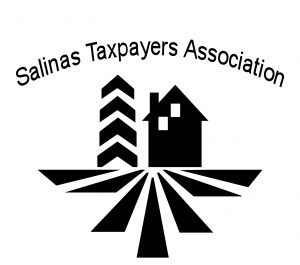Emailed to the Salinas City Council on June 27, 2016, this letter from the Salinas Taxpayers Association calls for more background information about a proposed city historic property tax discount. The tax discount – authorized under the California Mills Act – will be considered as Item ID#15-768 (Mills Act Tax Program) on the June 28, 2016 Salinas City Council meeting agenda. See text of the letter at this link or posted below: June 27, 2016 Salinas Taxpayers Association Letter – Item ID#15-768 Mills Act Tax Program
Background information provided by city staff to the Salinas City Council about Item ID#15-768 (Mills Act Tax Program) on the June 28, 2016 meeting agenda: June 28, 2016 Staff Report to Salinas City Council – Item ID#15-768 Mills Act Tax Program
California State Parks Office of Historic Preservation Mills Act Property Tax Abatement Program
Staff Report to Pacific Grove City Council on Proposed Mills Act Historic Property Discount on June 15, 2016 Meeting Agenda (City council rejected the proposal.)
June 27, 2016
Re: Request for Further Analysis of Item ID#15-768 (Mills Act Tax Program)
Dear City Councilmembers:
At your June 28, 2016 meeting, you will consider a resolution and an amendment to the Salinas Municipal Code to adopt a five-year pilot program to give owners of historic residential and commercial properties a tax reduction. This property tax discount would serve as an incentive for property owners to preserve, maintain, and improve historic properties.
The Board of Directors of the Salinas Taxpayers Association does not object to the concept of tax discounts to property owners who take on the challenging and costly burden of preserving, maintaining, and improving historic buildings. However, we believe the staff reports to the Planning Commission and City Council need to include more analysis of this proposed program to ensure tax fairness to the people who live, work, and own property in Salinas.
Since there isn’t any information provided about the number of historic properties in Salinas and their assessed property value, the public cannot know whether the $100,000 cumulative tax discount limit is higher than potential demand, lower than potential demand, or just right. One concern we have is that a handful of large commercial property owners could monopolize the tax discount by having their legal counsels submit comprehensive applications at the first business minute of the first day that the city accepts applications. Because tax discounts up to a $100,000 limit are awarded based on the order in which applications are received, ordinary property owners might be denied an opportunity to be eligible for the tax discount.
Here are some questions that might help to inform the city council and assure the public that adoption of this program would be a fair and fiscally responsible public policy:
- How many residential properties and how many commercial properties would be eligible for the tax discount? What is the cumulative assessed value of those types of properties?
- How will the city inform eligible property owners of the opportunity to apply for the tax discount? How many days will the city give to property owners between notice of the available tax discount and the start of the application period?
- The city proposes limiting the cumulative amount of tax discounts to $100,000 and selecting recipients of the discount based on the order they are received. How can the city ensure that the system is fair and devoid of favoritism that could occur if the city provides certain high- profile properties with special notice of the tax discount or assistance with the application?
- Is it legal for the city to select properties for the tax discount based on certain criteria other than the order of submission for applications? For example, should residential properties occupied by the owners full-time for many years get first priority for the tax discount?
- Would it be legal to have the Historic Resources Board evaluate applications and rank them?
- Are there aesthetic elements that would make a property more worthy of a tax discount than others? For example, is Victorian architecture worthy of getting first priority?
- Should the city make an effort to ensure tax discounts are distributed widely among all council districts rather than concentrated in a few neighborhoods?
- What is an appropriate balance of tax discounts between residential and commercial properties?
- Will the public have web access to a list of the historic properties receiving the tax discount?
- Will there be plaques or other means at historic property sites informing the public that they are preserved, maintained, and improved with the assistance of a local tax discount program?
We also suggest that the city council obtain and review the following:
- Actual text of the Mills Act in state law that authorizes the city to implement this program.
- Statistics and a summary of Mills Act performance in the 85 cities and counties that have adopted it. Are there any distinctive provisions in the municipal codes of those 85 cities and counties that resulted in exceptional participation or performance? Are there any protections that the 85 cities or counties would recommend to avoid abuses?
Thank you for your attention to our concerns. Sincerely,
Kevin Dayton
2016-17 President
Salinas Taxpayers Association
PO Box 2042
Salinas, CA 93902
https://salinastaxpayers.org

